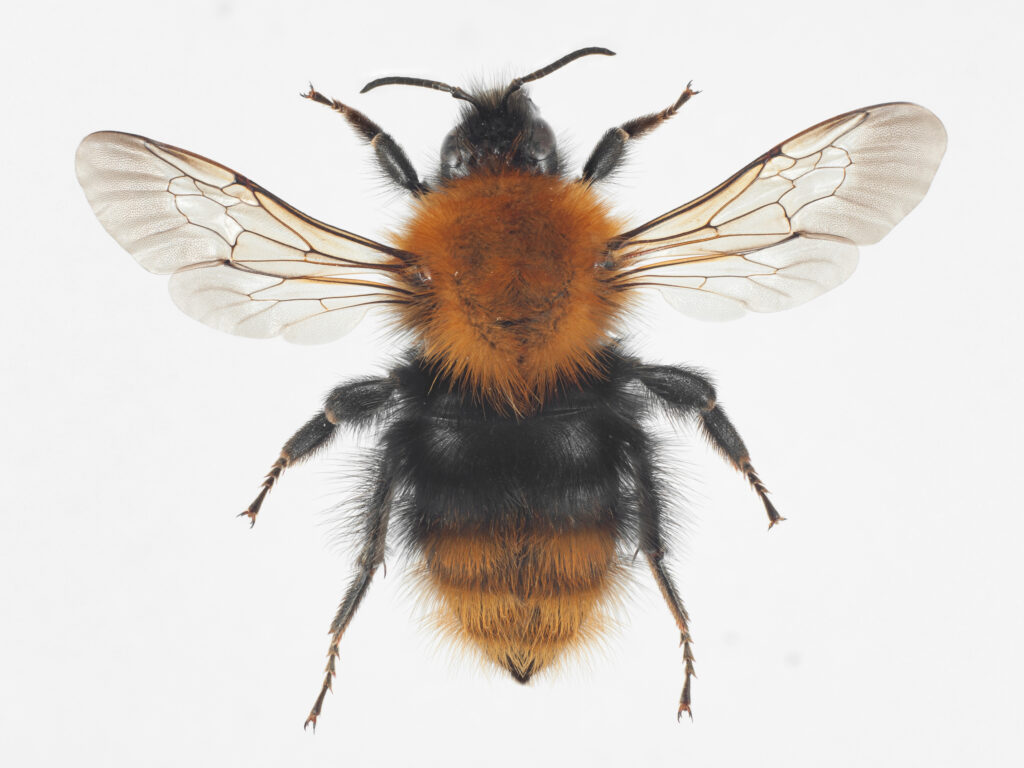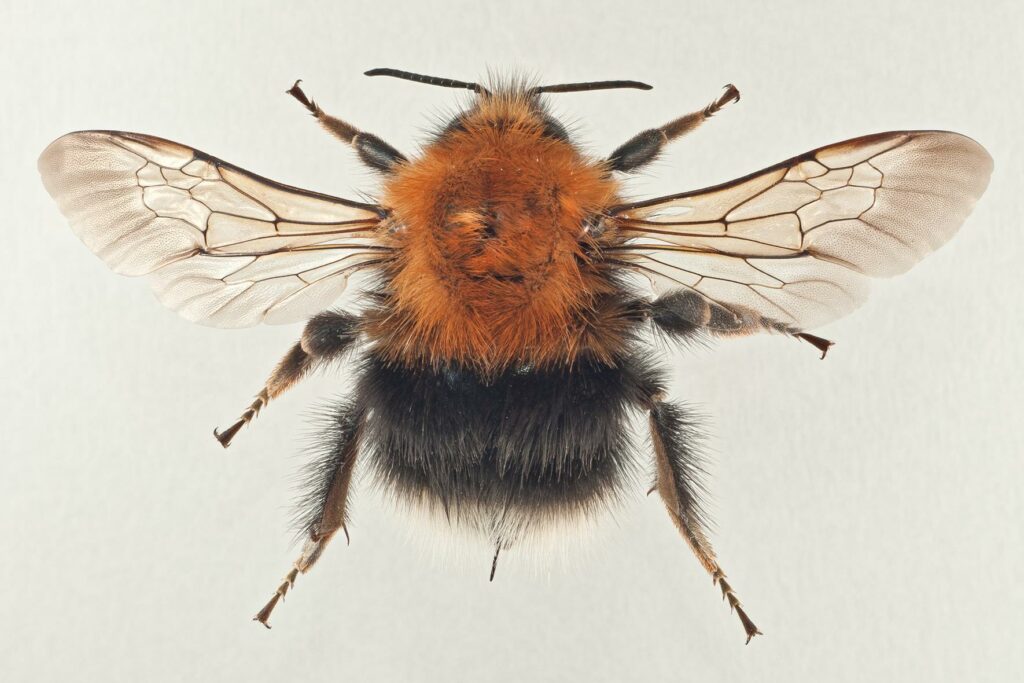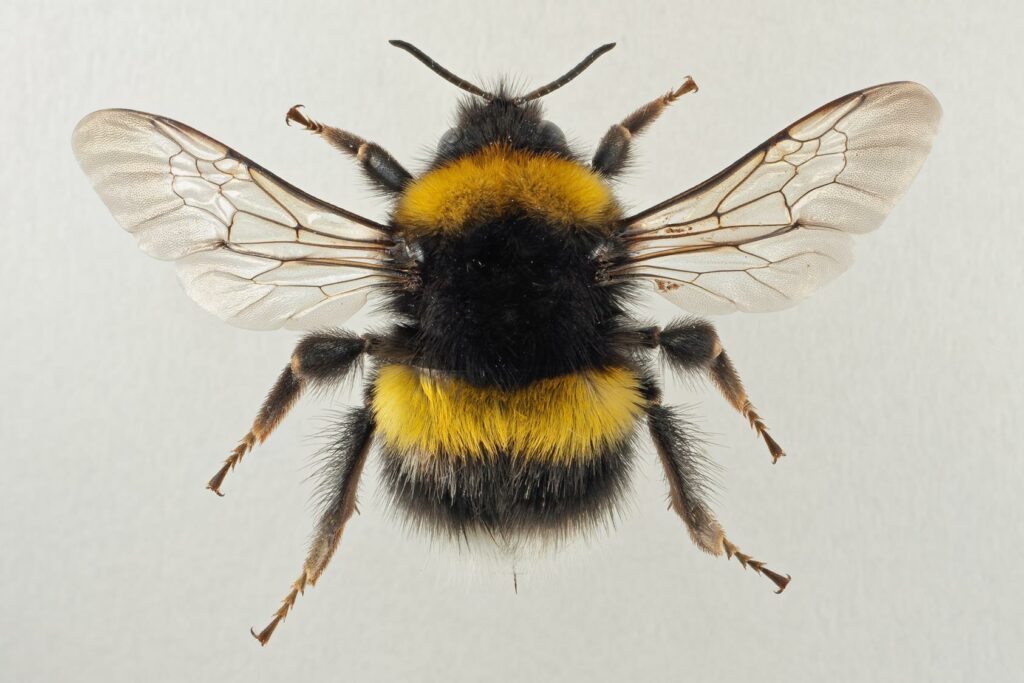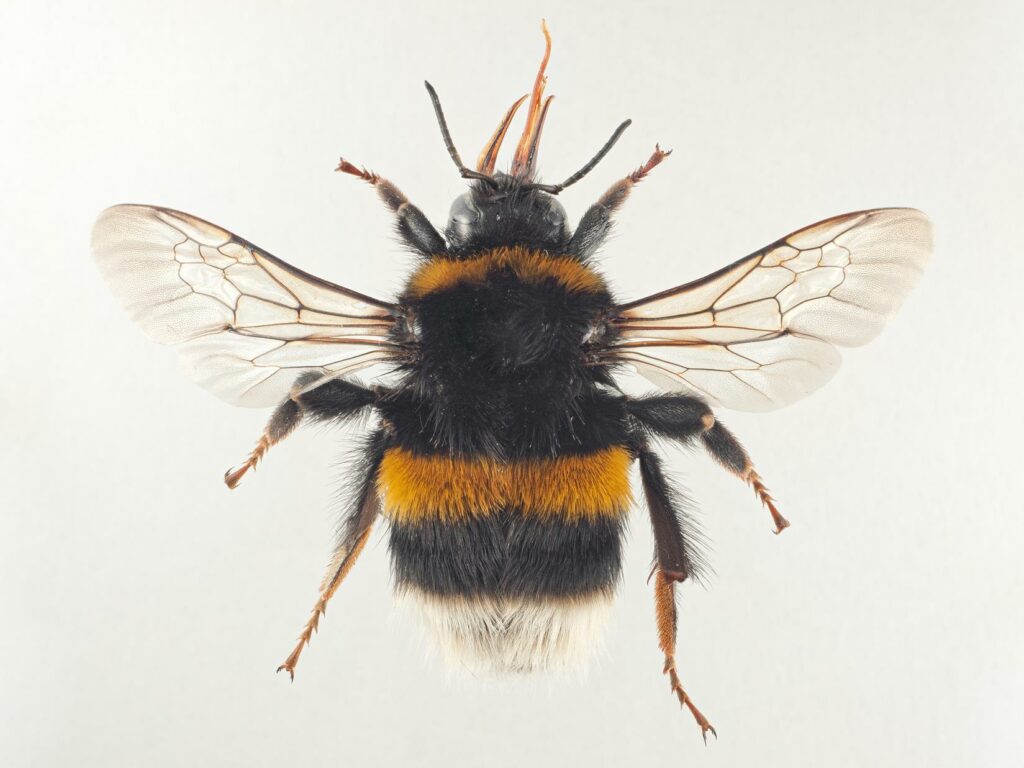In Norway, the conditions for wild pollinating insects have gradually worsened, and today as much as 25% are on the Norwegian Red List for Species. 16% are listed as critically endangered. Pollinating insects play an important role in seed formation and food production. We depend on these insects, and yet we put them under pressure. Their habitats are lost to new construction, the climate is changing, we introduce non-indigenous species and use pesticides.
By establishing meadows in gardens and edges of fields, we pull this development in a different direction.
In this project we will track the insects in and around the test fields. We predict (and hope) more species of insects will appear as the compositions of plants in the test fields develop.
Perhaps we will observe these species?

Common Carder Bee Bombus pascuorum
A hardy bumblebee. Often active in overcast weather and in late autumn. Typically orange-red with a wide black band over the abdomen.
Photo: Arnstein Staverløkk / Norwegian Institute for Nature Research
Tree Bumblebee Bombus hypnorum
A common species. Characteristically brown thorax and white tail. The tree bumblebee builds its nest in house walls, bird boxes or holes in trees. It can become aggressive it disturbed in the nest.
Photo: Arnstein Staverløkk / Norwegian Institute for Nature Research


White-tailed Bumblebee Bombus lucorum
A common species. It can be difficult to distinguish from other bumblebee species. A characteristic feature of the male is pale hair on the face. Their nests can be found underground and may contain 200-250 individuals.
Photo: Arnstein Staverløkk / Norwegian Institute for Nature Research
Buff-tailed Bumblebee Bombus terrestris
Also called the large earth bumblebee. It was not observed in Norway until 1950, and is now a common bumblebee species. It is often used as a pollinator in greenhouses. In 2013 and 2014, nests were introduced from abroad.
Photo: Arnstein Staverløkk / Norwegian Institute for Nature Research
